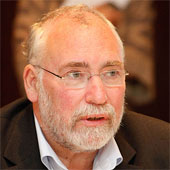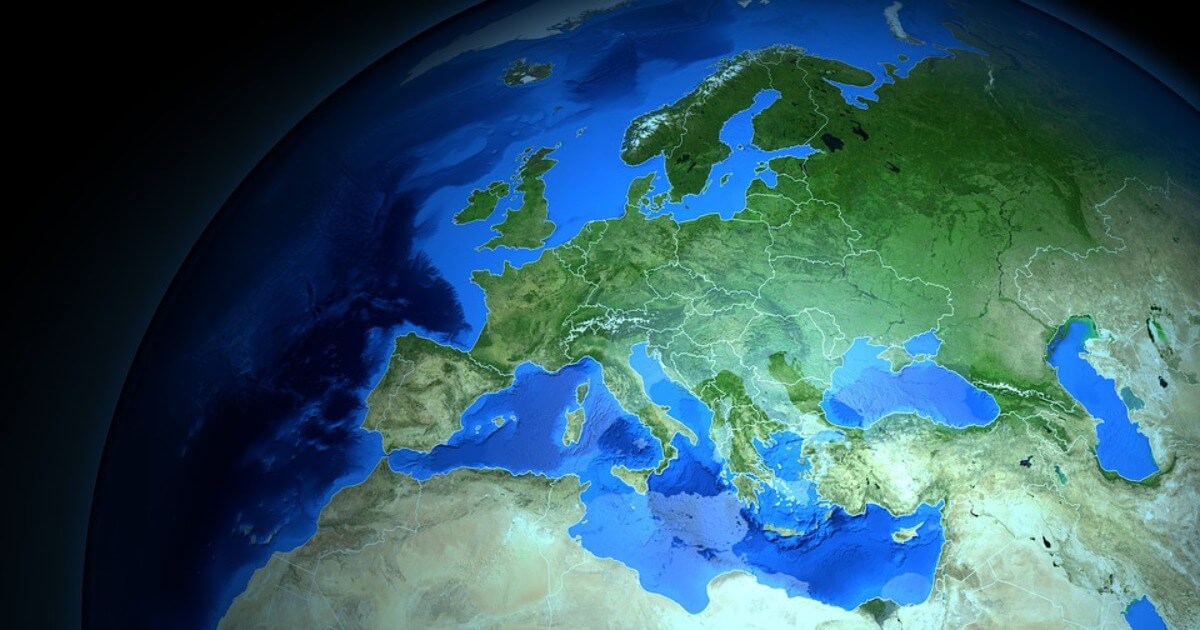China in My Life — A Personal Journey: The 1950s
How does the emergence of China look through the prism of a Westerner’s life?
July 1, 2021

The Chinese Communist Party turns 100 today. The Globalist takes this opportunity to republish an essay by the late Asianist and educator, Jean-Pierre Lehmann, the first of a multi-part series. In it he recalls his experiences in the 1950s and 1960 with an impoverished China that had recently turned communist.
1949
When I was four years old, my parents took my sister, my maternal grandmother and myself by boat to Yokohama, Japan. We went from France’s port city of Le Havre to New York, then crossed the entire United States by land, to take a ship from San Francisco.
The year was 1949 — the year of China’s Liberation. On the way to Japan, we stopped in Hong Kong. Later on, I found myself returning to Hong Kong throughout the 1950s. To this day, I remember the constant stream of refugees and the poverty, the thousands of people living on the barges with which they had escaped from mainland China.
Tokyo school
A Personal Journey: The 1950s
A Personal Journey: The 1960s
A Personal Journey: The 1970s
A Personal Journey: The 1980s
China in the 21st Century
Exploring China’s Future
At my first primary school, run by missionary nuns, in Tokyo — initially still under U.S. occupation — I remember when news circulated that one of the nuns had managed to escape from China and was being reunited with her sisters in Japan.
There was great jubilation.
Cruel Communists
The stories of cruelty by the Chinese communists that circulated at the time were truly atrocious. The one I recall the most was that Christians had chop-sticks inserted in both their ears — until they met in the middle of the head. For sure, the anti-Chinese propaganda was fierce — even if somewhat heavy.
Then, there was the Korean War, with U.S. and allied soldiers stopping on their way to the battlefield, or on R&R (that is, rest and recuperation) — or to be hospitalized.
Cold War
My mother worked as a volunteer nurse for wounded Spanish-speaking U.S. soldiers. She helped them write letters home, mainly to Puerto Rico, to tell their families what had happened to them.
As a result of the occupation, combined with the follow-on events of the Korean War, the Cold War and the Security Treaty which the United States and Japan signed in 1952, there was a strong U.S. military presence in Japan. Many of my schoolmates and friends were the sons of U.S. military and administrative personnel.
The arch-enemy
Seen from my childhood years, the picture of China that emerged was clear enough: The Chinese were poor, cruel — and the arch-enemy.
That sense of considerable poverty was confirmed both by the repeated visits to Hong Kong — even if by the late 1950s it was becoming more prosperous — and by the condition of the people living in the quite large Chinatown that existed at the time in Yokohama.
During my childhood, the cruelty and enemy images were constantly reinforced by the films and literature, including comic books, of the period.
Taiwanese friends
My parents had a number of friends from Taiwan — which at the time we never called anything else than the Republic of China — who, not surprisingly, confirmed the perspective of (mainland) China as enemy.
My next stop, in 1960, actually was Washington, D.C., where I remained until 1966.
In the United States
In those heady years of the Kennedy Administration and the ensuing tragedy of his assassination, I attended the School of Foreign Service at Georgetown University, which at the time was a highly conservative, not to say reactionary, institution.
It was the founder of Georgetown University’s now-famous School of Foreign Service, Father Edmund Walsh, SJ, who initially gave Senator Joe McCarthy, a fellow Catholic, the idea that he might focus on the threat of communism in the United States in his campaign — though he did subsequently distance himself from him.
One China policy
This was a time when the United States — and all its allies — followed the “one China” policy, with the one being the Republic of China and its government in Taipei under the military rule of General Chiang Kaishek.
It was while I was in Georgetown, in 1964, that French President Charles de Gaulle bucked and proceeded to declare the government in Beijing as the legitimate government of China.
The French
I do not think the animosity against the French in 1964 was as strong as it was in the United States in 2003 over the Iraq war. There was no proposal to rename French fries, French toast or, indeed, the French kiss — but it was nevertheless quite strong.
The curiously circular perspective in the United States at the time was that, since all “baddies” were communists, then de Gaulle — and, by logical extension, France — had to be communist as well.
The bamboo curtain
As a French citizen who by accident of family history had been born in Washington, D.C., I spent much of my time trying to explain, quite fruitlessly, that this perspective was incorrect. It was an early lesson in the perils of intercultural dialogue at critical junctures.
What remained consistent, though, was the leitmotif in our political science classes, of casting China as the enemy. The “bamboo curtain” — not just the iron curtain (reserved for the Soviets) — was always prominent.
Vietnam
And in those classes at Georgetown, we also learned about how the Chinese were assisting insurrection movements in Southeast Asia generally — and in North Vietnam (and the Viet Cong, with whom the United States was by then in full-throttle war) in particular.
France’s president de Gaulle only further incensed the Americans — by voicing his opposition to the war in Vietnam and, in a major speech delivered in Phnom Penh on September 1, 1966, by urging the United States to withdraw.
He may have spoken from painful experience, and in order to warn a nation, which he admired due to the heroics of rescuing France during WWII. But who in Washington ever considers those outsiders really caring about Washington’s fate anyway?
“The poor Chinese”
Although the literary genre of the “poor Chinese” was launched by Pearl Buck, in her epic 1931 novel “The Good Earth,” raising the topic as a constant refrain still had a considerable influence on my generation.
Truth be told, even inside the United States, there was a noticeable pro-Chinese lobby, made up of missionaries. Even so, the mantra of the “poor Chinese” remained prevalent.
The fact that this image of poverty inside China also corresponded to a large extent to the reality of the Chinese community inside the United States gave additional firepower to this view.
The Chinese in the United States
Trivial as it may sound, throughout my years at Georgetown University, I took my dirty clothes to a Chinese laundry. This was, so far as I can recollect, the only actual contact I had with Chinese.
Of course, there were also the supposedly Chinese restaurants, run by Chinese. But the fare they served at that time was cruelly bastardized to appeal to American tastes and consisted of bland Chinese-American inventions, such as chow mein and chop suey.
MIT=Made in Taiwan
It was only after 1965 — as Peter Kwong and Dusanka Miscevic point out in “Chinese America” — when the United States changed its immigration policy and began actively searching for foreign scientific talent that Chinese students and professionals began arriving on U.S. shores.
I left the country in 1966 and was hence not exposed to that new wave. Still, I was impressed, when I returned to the United States in the 1980s that I learned that MIT was now being referred to as “Made in Taiwan.” Times had changed indeed.
No “real” Chinese
During my time at Georgetown, there were a few Asian students — including the current president of the Philippines, Gloria Macapagal Arroyo. Some of them were no doubt of ethnic Chinese descent, but there were no “real” Chinese — whether from mainland China, Taiwan or Hong Kong — that I can remember.
Although my own views of China began undergoing radical change in the course of the 1960s, the prevailing image of the country at the time was still that of a poor, cruel country — and the enemy.
The cruelty/enemy perspective also made for popular fare in the movies, notably in the Manchurian Candidate, a great box office hit, starring Frank Sinatra, Laurence Harvey, Angela Lansbury and Janet Leigh.
Travels in East Asia
In 1966/67, I spent a year traveling in East Asia, including Japan, South Korea, Taiwan, Hong Kong, the Philippines, Malaysia, Singapore, Thailand, Cambodia and Vietnam.
Although Japan had by then recovered for the most part — in 1967 its aggregate GDP surpassed that of West Germany — much of the rest of Asia was still poor. South Korea’s GDP, on a per capita basis, was still the same as that of the average African country.
Meanwhile, Taiwan’s main source of foreign exchange at the time was servicing U.S. soldiers on their R&R excursions from Vietnam. And, lest we forget, geopolitically Southeast Asia was then seen as the world’s most volatile region.
Domino theory
As the Vietnam war raged, the “domino theory” — whereby, if or when, Vietnam “fell” to communism, so would all the countries in the region — reigned supreme.
Needless to say, China was cast as the dominant rival domino-player.
Overseas Chinese
China’s image began to splinter somewhat, though. The overseas Chinese were within a couple of decades of emerging as one of the world’s wealthiest communities, even though the equation of “China = poor” was still going strong in the mid-1960s.
In fact, when I visited Malaysia at the time, I remember a joke circulating among the expatriates. As the joke had it, heaven consisted of an English home, a Japanese wife, a Chinese cook and an American salary, while hell was a Japanese home, an English cook, an American wife — and a Chinese salary.
Editor’s Note: Read Part II here.
Takeaways
Seen from my childhood years, the prevailing image of China at the time was still that of a poor, cruel country — and the enemy.
The stories of cruelty by the Chinese communists that circulated at the time were truly atrocious.
During my childhood, the cruelty and enemy images of China were constantly reinforced by the films and literature, including comic books, of the period.
Trivial as it may sound, I took my dirty clothes to a Chinese laundry. This was, so far as I can recollect, the only actual contact I had with Chinese.
The leitmotif in our political science classes, of casting China as the enemy — the "bamboo curtain" — was always prominent.

